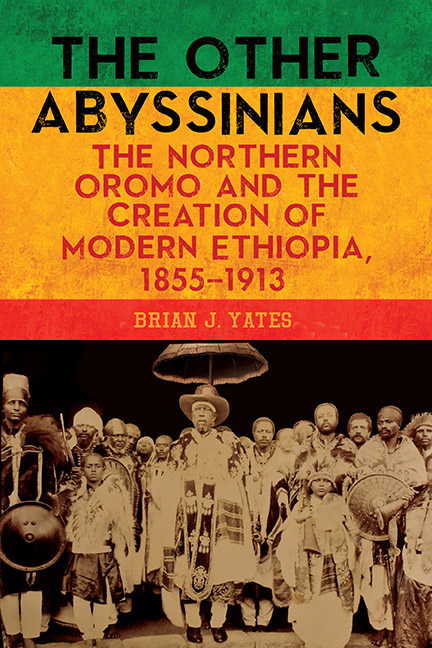Book contents
- Frontmatter
- Contents
- Preface
- Introduction: What about the Oromo Habäsha? Liberating Northern Oromo Experience from Competing Nationalisms
- 1 Cultural Backgrounds and the Habäsha State
- 2 In but not of: The (Re)Integration of the Wällo Oromo into the Habäsha Community
- 3 Menilek, Gobäna, and the Creation of Habäsha Shäwa, 1855–88
- 4 Recreating the Autonomy of Wällo: The Unions of Mikaél and Menilek
- 5 From Personal Relationships to a Centralizing State: Shäwan Ethiopia (1889–1913)
- Conclusion: The Oromo Habäsha in Modern Ethiopia
- Appendix A Guide to the Transliteration of the Ethiopic Script to the Latin Script
- Appendix B Glossary of Ethiopian Terms
- Appendix C Sample Interview Questions for Shäwa and Wällo
- Notes
- Bibliography
- Index
2 - In but not of: The (Re)Integration of the Wällo Oromo into the Habäsha Community
Published online by Cambridge University Press: 21 March 2020
- Frontmatter
- Contents
- Preface
- Introduction: What about the Oromo Habäsha? Liberating Northern Oromo Experience from Competing Nationalisms
- 1 Cultural Backgrounds and the Habäsha State
- 2 In but not of: The (Re)Integration of the Wällo Oromo into the Habäsha Community
- 3 Menilek, Gobäna, and the Creation of Habäsha Shäwa, 1855–88
- 4 Recreating the Autonomy of Wällo: The Unions of Mikaél and Menilek
- 5 From Personal Relationships to a Centralizing State: Shäwan Ethiopia (1889–1913)
- Conclusion: The Oromo Habäsha in Modern Ethiopia
- Appendix A Guide to the Transliteration of the Ethiopic Script to the Latin Script
- Appendix B Glossary of Ethiopian Terms
- Appendix C Sample Interview Questions for Shäwa and Wällo
- Notes
- Bibliography
- Index
Summary
Ras Ali II was an exceptional figure in Ethiopian history, simultaneously a challenge to Habäsha norms and emblematic of the culture of the Zämänä Mäsafent. Ras Ali was a product of two different Oromo houses, one formerly Muslim the other presently Muslim, challenging both ethnic and religious notions of the state. At the same time, he was an Amharic speaking highborn noble who came to power as a child, with his mother as regent and wife of the emperor. In other words, while on the surface Muslim Oromo men and women leading Ethiopia would seem to contradict notions of the state, the specifics of the products of Ras Gugsa's marriage alliances ruling Ethiopia after his death is consistent with nineteenth century Ethiopian culture. The rule of Gugsa's sons—Mariye, Yimam, and Dori—did not last a decade, and, after meeting with political elites in Ethiopia, Ali was chosen as the next leader of Ethiopia, with his mother as his regent. Another marriage, this time between his widowed mother and Emperor Yohannes III, cemented imperial legitimacy. Ali possessed both local legitimacy due to his Mammadoch Muslim father and imperial legitimacy due to his kingmaker ancestors and empress mother. Using his authority, he created alliances between the various provincial rulers and utilized marriages to strengthen his network.
This chapter focuses on the nineteenth-century transition of Wällo Oromo Muslims from a centrifugal force both within Wällo and northern Ethiopia to a unified house and territory that was increasingly tied to the Habäsha community. The traditional law codes of Ethiopia state that “[t] he King you appoint must be one of your brethren. It is not proper for you to appoint over yourself an alien and an infidel.” The chapter traces the journey of Wällo from alien infidels to Habäsha brethren. Continuing from the previous chapter, I argue that these actors combined existing Habäsha political and cultural systems with Oromo cultural practices and used them to increase their power through god-parentage, land acquisitions, and military support. While previous studies of Ethiopia present this territory and its populations as peripheral to Ethiopia's identity, I maintain that the shifts in this province's identity are central to an understanding of Ethiopia's modern construction.
- Type
- Chapter
- Information
- The Other AbyssiniansThe Northern Oromo and the Creation of Modern Ethiopia, 1855-1913, pp. 37 - 54Publisher: Boydell & BrewerPrint publication year: 2020

